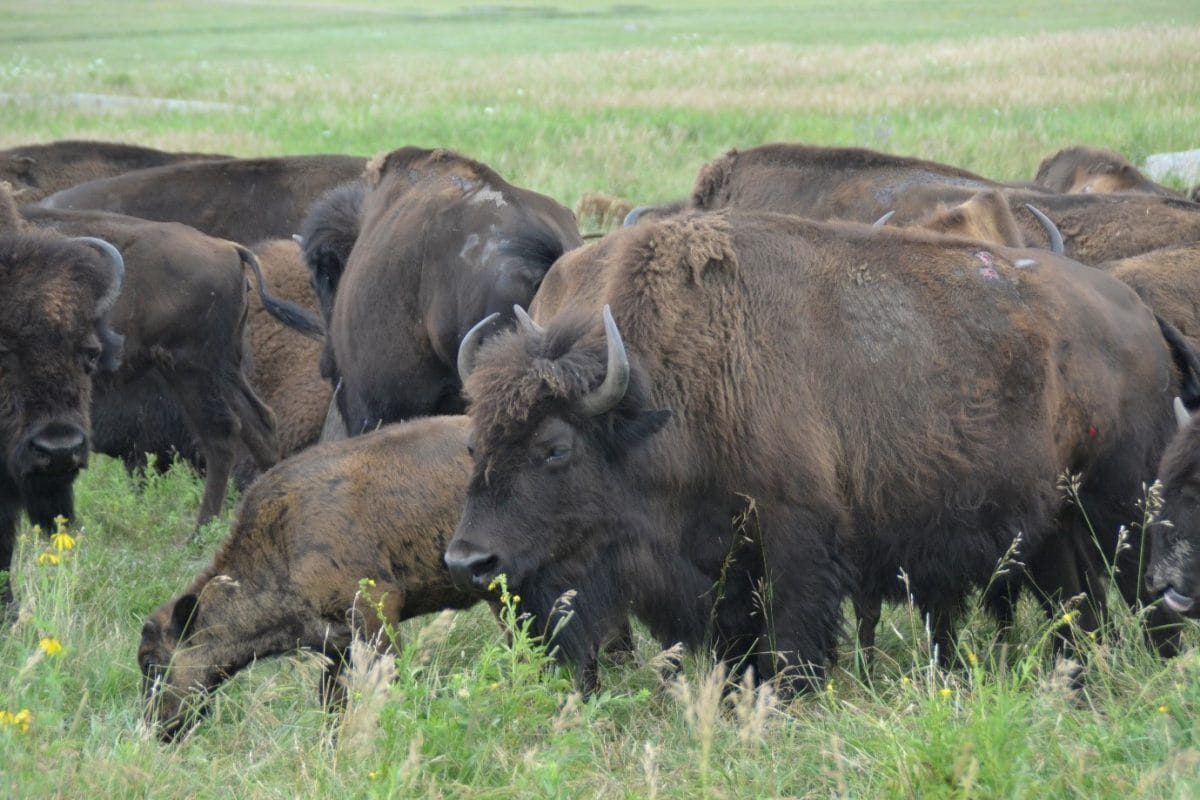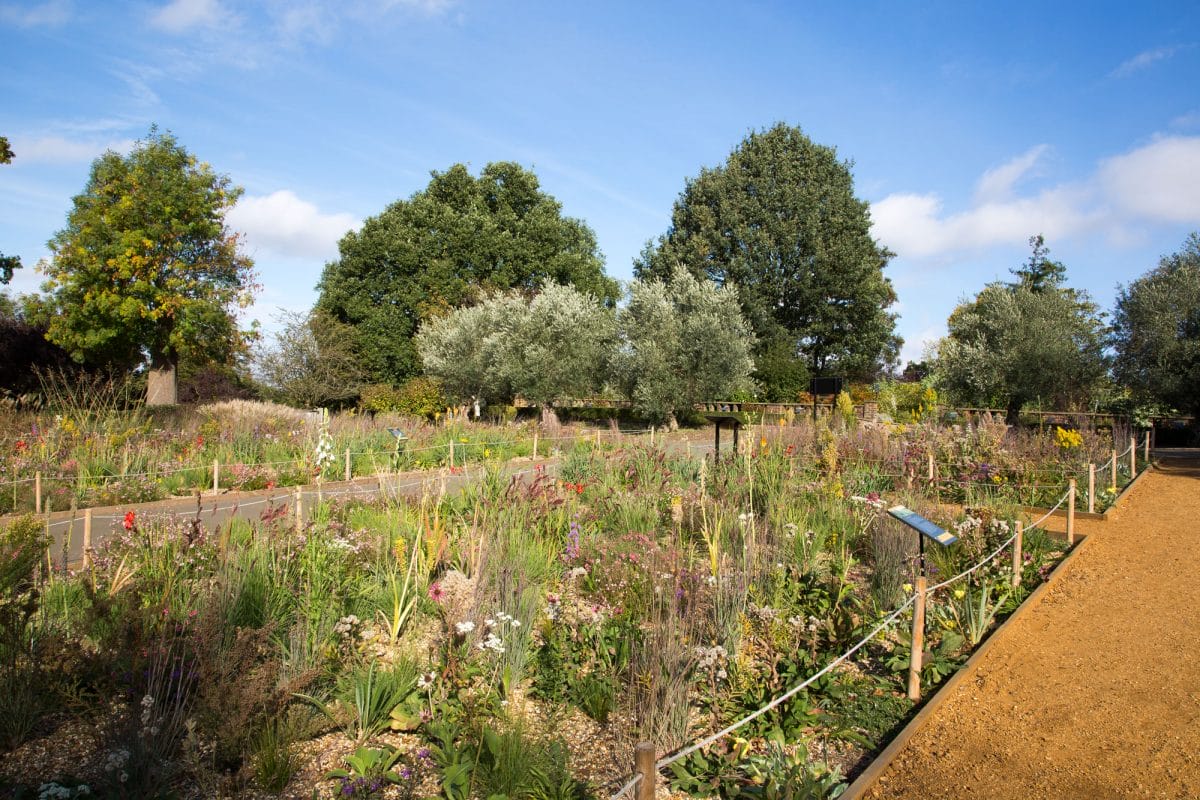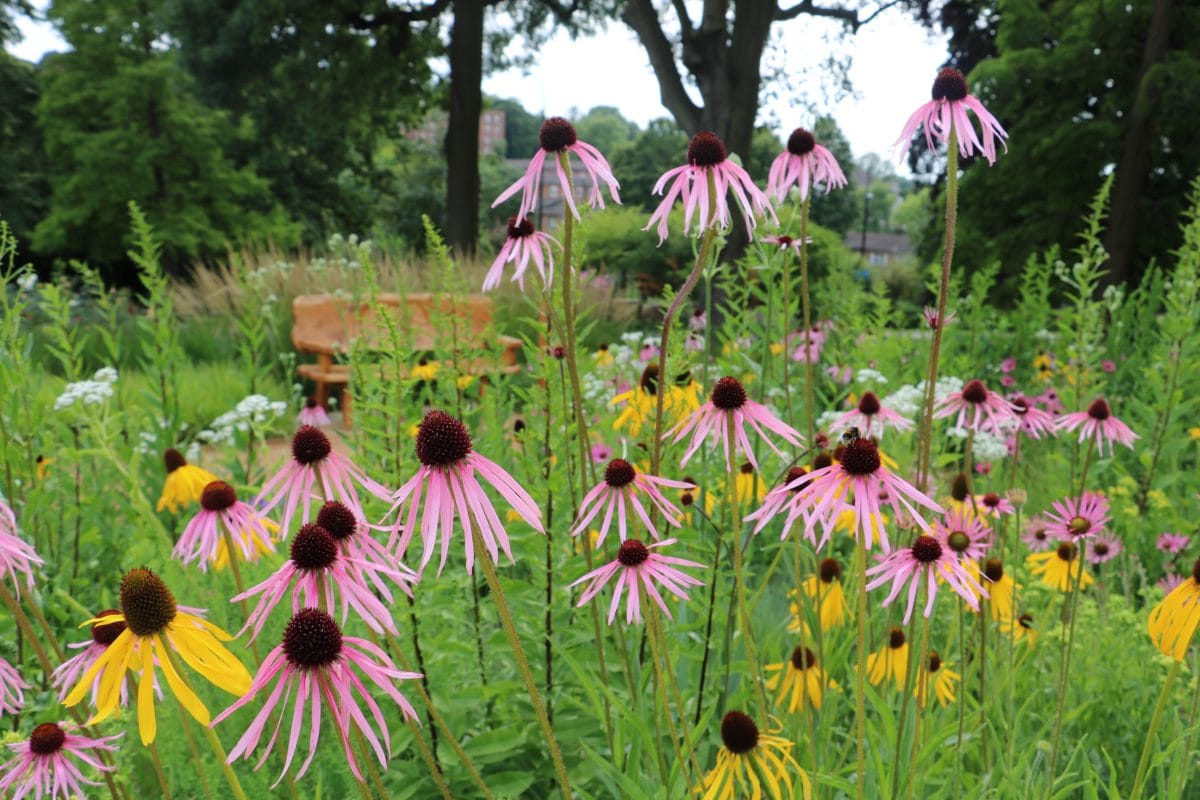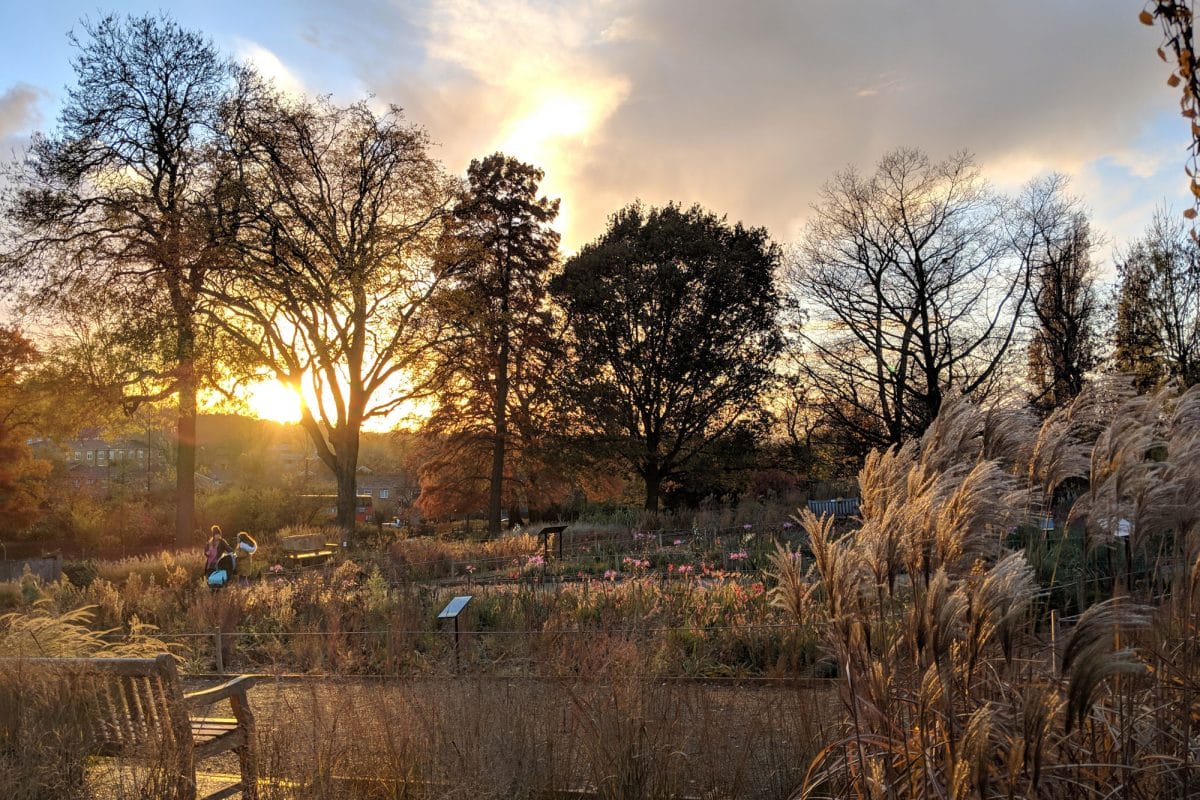Our new Grasslands Garden, which opened in 2018, draws its inspiration from the grassland habitats of the North American Prairie and the South African Drakensburg mountain region.
It was designed by James Hitchmough, Professor of Horticultural Ecology at Sheffield University, who specialises in studying wild herbaceous plant communities to create spectacular urban planting schemes.
In July, I travelled to the Midwest of the USA to experience the prairie first-hand. I flew in and out of Chicago and, with the help of Marcus de la fleur, a Chicago resident and expert on the prairie, I travelled more than 2,000 miles over two weeks, to see some of his recommended locations.
The prairie used to cover millions of square miles, from Texas all the way up into Canada.
Sadly, there is less than 1% of this amazing habitat left after early settlers began to plough the land for agriculture, using the nutrient-rich prairie soil. What little is left is now protected and managed by enthusiastic volunteers and conservation organisations, and survives in small pockets amongst corn fields and the suburbs.
The types and variety of plants in a prairie depend on the geographical features and available water in each landscape, but prairie vegetation predominantly consists of a mixture of grasses and herbaceous plants. The area of the Midwest I travelled through is dominated by tallgrass prairie.



I was advised by Marcus that the best locations to see a diversity of flowering plants are sites that were burned earlier in the year, as part of a management schedule.
Prescribed burning mimics natural wildfires that would have been started by lightning strikes, or by the indigenous people, as a method of herding buffalo to migrate and feed on the new growth of burnt land.
Burning is integral to the survival and health of the prairie, as it kills invasive woody plants, clears away dead vegetation, and returns nutrients to the soil.
The prairie is an important habitat, because it provides an enormous food resource for birds, butterflies, insects and wildlife, ranging from prairie dogs to the mighty buffalo. The prairie was, and remains, very significant to the indigenous people who have a spiritual connection to the landscape, as it provided all the resources required for survival.
Visually, they are a truly beautiful sight. The prairie has stunning grasses and flowering perennials that bloom in succession from spring into the autumn months – compare that to our own native wildflowers that have all but finished flowering by mid-summer.
The North American prairie has for some years been an influence on garden designers and horticulturists, with a new perennial movement starting in the 1990s that attempted to recreate the naturalistic look and qualities of the prairie.
Practitioners of this style of naturalistic planting include Piet Oudolf, James Hitchmough, Nigel Dunnett, Tom Stuart-Smith, Dan Pearson, and Beth Chatto.
Many prairie plants have made their way across the pond, and are commonly seen on sale in garden centres and plant nurseries. They make really good garden plants because many flower into late summer and are good at putting up with hot dry conditions. They also look great!
Echinacea purpurea (Purple Coneflower), Eryngium yuccifolium (Rattlesnake Master), Liatris spicata (Blazing Star) and Aster ericoides (Heath Aster) are all plants that you will see in gardens across the UK.
The prairie locations for the connoisseur plant hunter, are the ones that are called ‘remnant’, meaning they have never been ploughed. These sites give the best indication of what natural prairie habitat would have looked like when most of the Midwest was grassland, and they usually have the best diversity of flowering plants… so more bang for your buck.
Of the surviving prairie, most is restored vegetation rather than remnant. These are the areas that are undergoing work to remove unwanted woody plants and trees in an attempt to recreate the look and diversity of remnant prairie, but this is a slow and difficult long-term endeavour.



Exploring the prairie isn’t for the faint-hearted: it is a harsh environment full of mosquitos, ticks and chiggers (a type of mite) and is VERY hot and humid in the summer months.
Tallgrass prairie can be over 10ft in height, and can be difficult to navigate.
A prairie explorer needs to be well-equipped in the field. The following equipment is essential: bug spray; long socks to tuck trousers into (a tactic used to avoid ticks, but not a great fashion statement); water; hat; sunglasses; and sun lotion. Finally you need a good field guide so you can recognise the huge assortment of flowering plants and grasses.
My two-week exploration of the prairie was an amazing experience, and I felt incredibly privileged to be able to appreciate first-hand such an amazing habitat. I was able to see many of the plants we are growing in the Grasslands Garden in their natural habitat, which for a horticulturist is priceless to understand how they grow and relate that to our own garden display.
I was very lucky to have Marcus as my prairie guide – he gave up a lot of his time which I am very grateful for.
I also have to thank the Royal Horticultural Society for funding my travels through their fantastic bursary scheme.
I hope this blog will encourage readers to come and visit the Grasslands Garden and perhaps, if they ever travel to the Midwest, to look out for those last remaining pockets of prairie.








